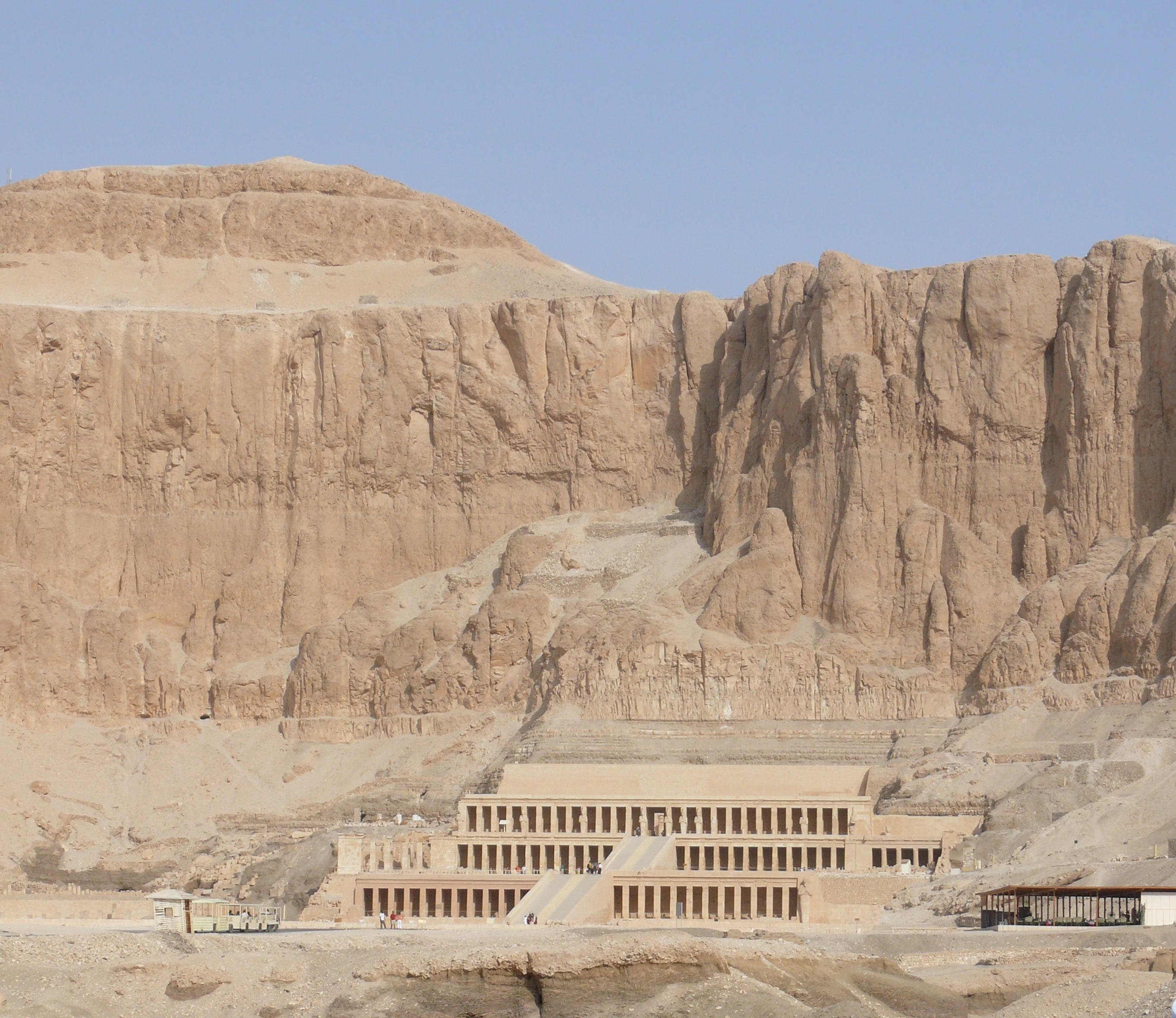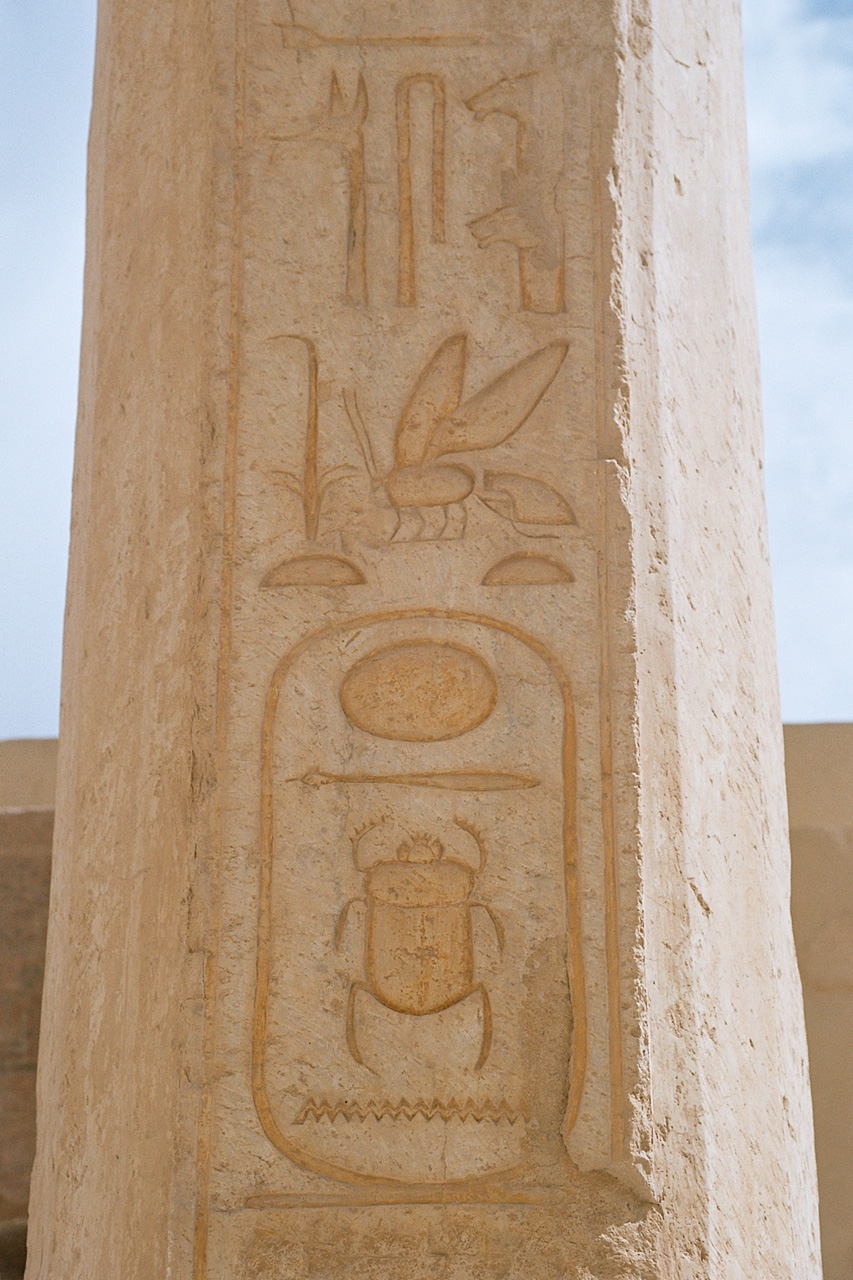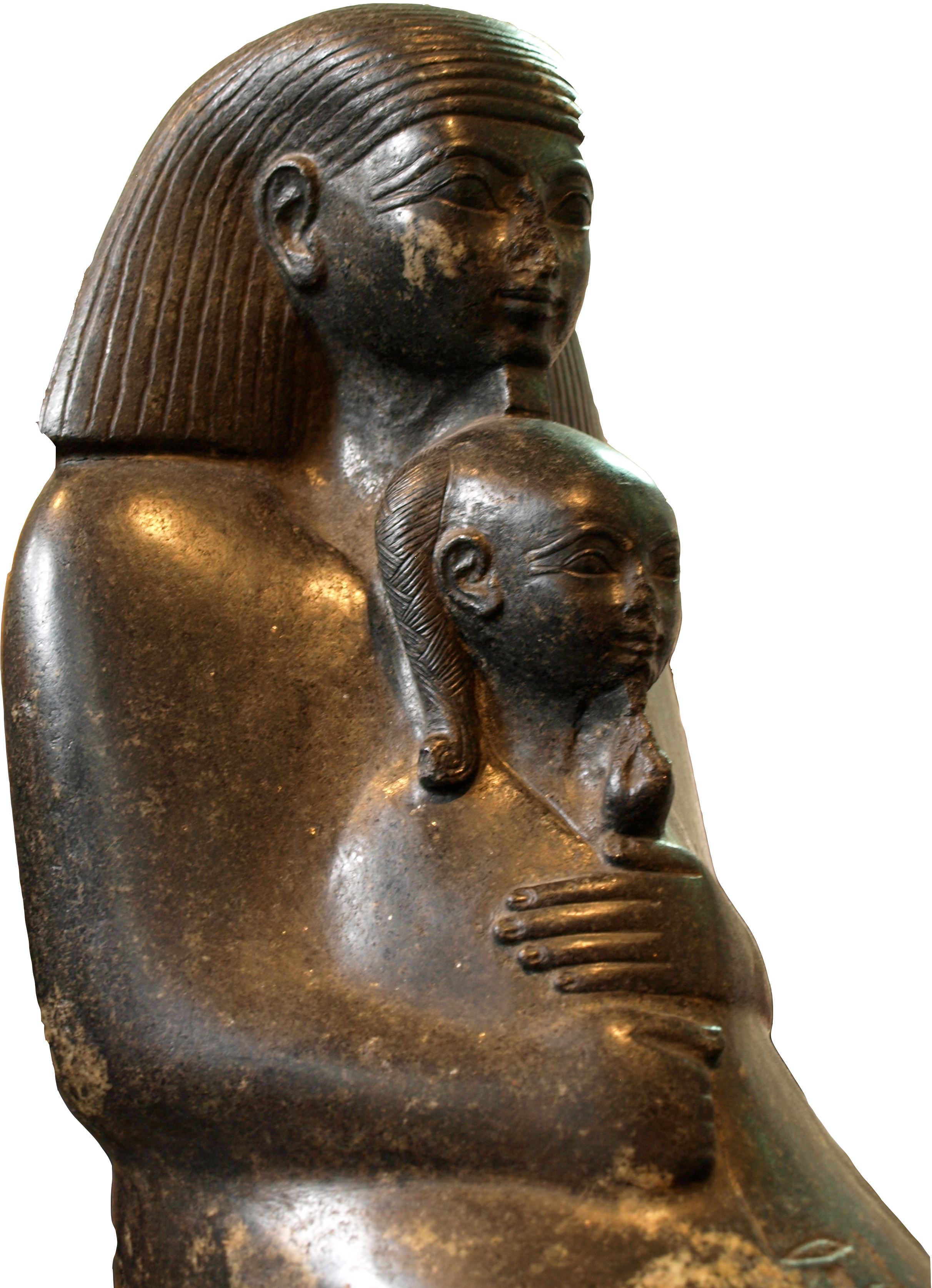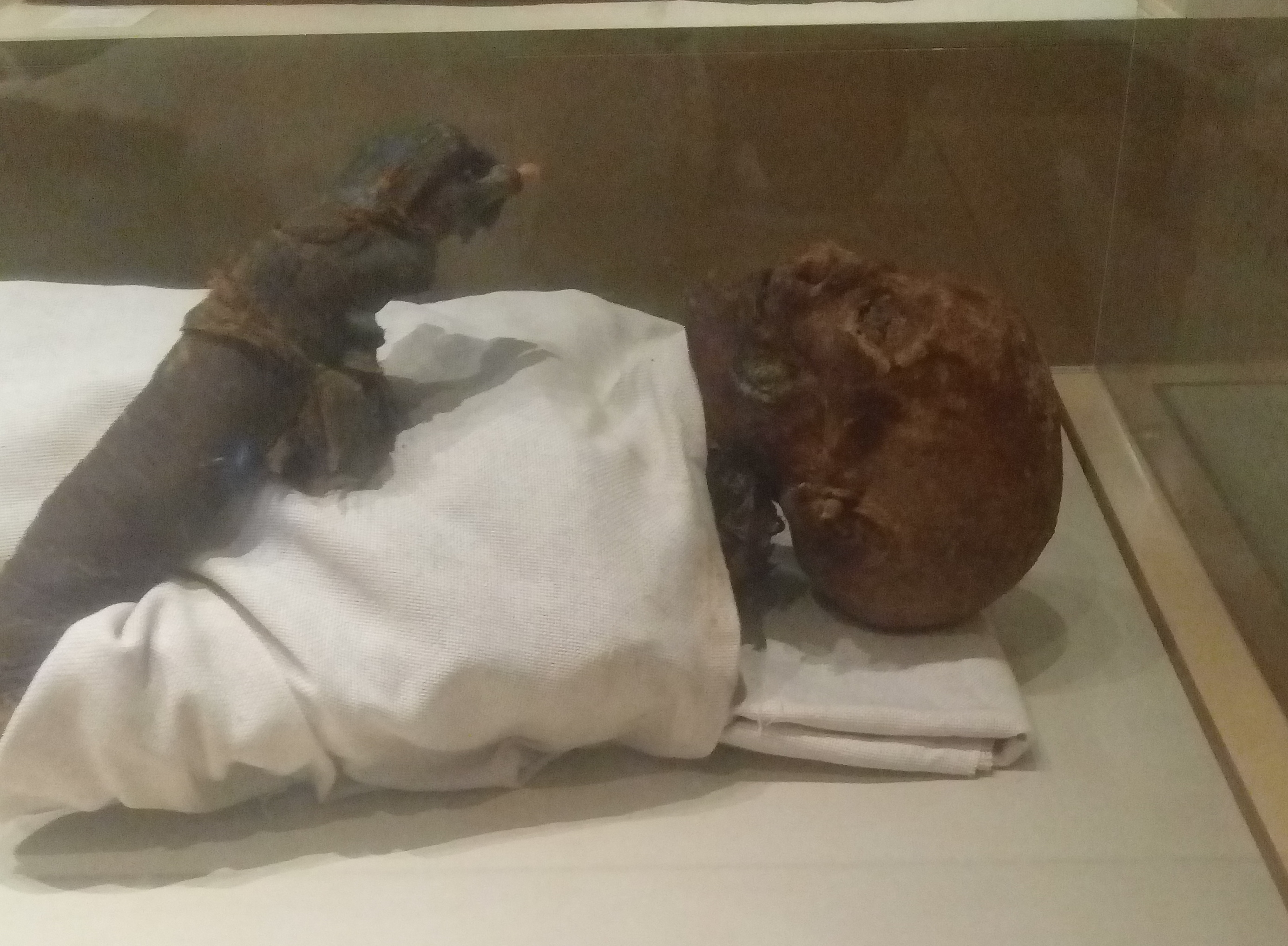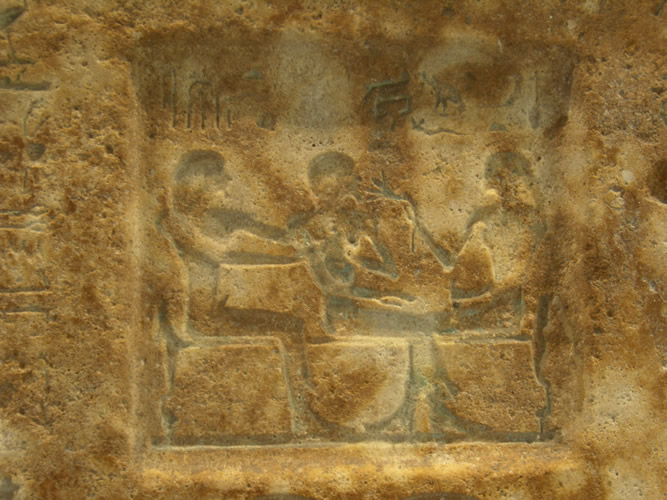|
Hatshepsut
Hatshepsut (; also Hatchepsut; Egyptian: '' ḥꜣt- špswt'' "Foremost of Noble Ladies"; or Hatasu c. 1507–1458 BC) was the fifth pharaoh of the Eighteenth Dynasty of Egypt. She was the second historically confirmed female pharaoh, after Sobekneferu. (Various other women may have also ruled as pharaohs or at least regents before Hatshepsut, as early as Neithhotep around 1,600 years prior.) Hatshepsut came to the throne of Egypt in 1478 BC. As the principal wife of Thutmose II, Hatshepsut initially ruled as regent to Thutmose III, a son of Thutmose II by another wife and the first male heir. While Thutmose III had inherited the throne at about two years old, Hatshepsut continued to rule by asserting her lineage as the daughter and only child of Thutmose I and his primary wife, Ahmose. Her husband Thutmose II was the son of Thutmose I and a secondary wife named Mutnofret, who carried the title 'King's daughter' and was probably a child of Ahmose I. Hatshepsut and T ... [...More Info...] [...Related Items...] OR: [Wikipedia] [Google] [Baidu] |
Mortuary Temple Of Hatshepsut
The mortuary temple of Hatshepsut ( Egyptian: ''Ḏsr-ḏsrw'' meaning "Holy of Holies") is a mortuary temple built during the reign of Pharaoh Hatshepsut of the Eighteenth Dynasty of Egypt. Located opposite the city of Luxor, it is considered to be a masterpiece of ancient architecture. Its three massive terraces rise above the desert floor and into the cliffs of Deir el-Bahari. Her tomb, KV20, lies inside the same massif capped by El Qurn, a pyramid for her mortuary complex. At the edge of the desert, east, connected to the complex by a causeway lies the accompanying valley temple. Across the river Nile, the whole structure points towards the monumental Eighth Pylon, Hatshepsut's most recognizable addition to the Temple of Karnak and the site from which the procession of the Beautiful Festival of the Valley departed. The temple's twin functions are identified by its axes: its main east-west axis served to receive the barque of Amun-Re at the climax of the festival, while i ... [...More Info...] [...Related Items...] OR: [Wikipedia] [Google] [Baidu] |
Chapelle Rouge
The Red Chapel of Hatshepsut or the Chapelle rouge was a religious shrine in Ancient Egypt. The chapel was originally constructed as a barque shrine during the reign of Hatshepsut. She was the fifth pharaoh of the Eighteenth Dynasty from approximately 1479 to 1458 BC. It was demolished in antiquity and its parts reused in other projects. However, following its rediscovery in modern time, the Chapel was reconstructed in 1997 using its original materials. The chapel's original location may have been in the central court of the temple of Amun at Karnak, near Thebes. Alternatively, it might have been situated between the two obelisks of Hatshepsut. It is also thought that Hatshepsut erected several smaller chapels and the Chambers of Hatshepsut behind the chapel. Background Ancient Egyptians believed that a sacred barque was used in a nightly journey of the sun deity, traveling from the western horizon at sunset behind the earth to the eastern horizon where the sunrise ... [...More Info...] [...Related Items...] OR: [Wikipedia] [Google] [Baidu] |
Thutmose II
Thutmose II (sometimes read as Thutmosis or Tuthmosis II, Thothmes in older history works in Latinized Greek; Ancient Egyptian: /''ḏḥwty.ms''/ ''Djehutymes'', meaning "Thoth is born") was the fourth Pharaoh of the Eighteenth Dynasty of Egypt. His reign is generally dated from 1493 to 1479 BC. His body was found in the Deir el-Bahri Cache above the Mortuary Temple of Hatshepsut and can be viewed today in the National Museum of Egyptian Civilization in Cairo. Family Thutmose II was the son of Thutmose I and a minor wife, Mutnofret. He was, therefore, a lesser son of Thutmose I and chose to marry his fully royal half-sister, Hatshepsut, in order to secure his kingship. While he successfully put down rebellions in Nubia and the Levant and defeated a group of nomadic Bedouins, these campaigns were specifically carried out by the king's Generals, and not by Thutmose II himself. This is often interpreted as evidence that Thutmose II was still a minor at his accession. Thutmose I ... [...More Info...] [...Related Items...] OR: [Wikipedia] [Google] [Baidu] |
Thutmose III
Thutmose III (variously also spelt Tuthmosis or Thothmes), sometimes called Thutmose the Great, was the sixth pharaoh of the Eighteenth Dynasty. Officially, Thutmose III ruled Egypt for almost 54 years and his reign is usually dated from 28 April 1479 BC to 11 March 1425 BC, from the age of two and until his death at age fifty-six; however, during the first 22 years of his reign, he was coregent with his stepmother and aunt, Hatshepsut, who was named the pharaoh. While he was shown first on surviving monuments, both were assigned the usual royal names and insignia and neither is given any obvious seniority over the other. Thutmose served as the head of Hatshepsut's armies. During the final two years of his reign, he appointed his son and successor, Amenhotep II, as his junior co-regent. His firstborn son and heir to the throne, Amenemhat, predeceased Thutmose III. He would become one of the most powerful pharaohs of the 18th dynasty. Becoming the sole ruling pharaoh of t ... [...More Info...] [...Related Items...] OR: [Wikipedia] [Google] [Baidu] |
Thutmose I
Thutmose I (sometimes read as Thutmosis or Tuthmosis I, Thothmes in older history works in Latinized Greek; Ancient Egyptian: '' ḏḥwtj- ms'', ''Tʼaḥawtī-mīsaw'', , meaning "Thoth is born") was the third pharaoh of the 18th Dynasty of Egypt. He received the throne after the death of the previous king, Amenhotep I. During his reign, he campaigned deep into the Levant and Nubia, pushing the borders of Egypt farther than ever before in each region. He also built many temples in Egypt, and a tomb for himself in the Valley of the Kings; he is the first king confirmed to have done this (though Amenhotep I may have preceded him). Thutmose I's reign is generally dated to 1506–1493 BC, but a minority of scholars—who think that astrological observations used to calculate the timeline of ancient Egyptian records, and thus the reign of Thutmose I, were taken from the city of Memphis rather than from Thebes—would date his reign to 1526–1513 BC. He was succeeded by his son ... [...More Info...] [...Related Items...] OR: [Wikipedia] [Google] [Baidu] |
KV20
KV20 is a tomb in the Valley of the Kings (Egypt). It was probably the first royal tomb to be constructed in the valley. KV20 was the original burial place of Thutmose I (who was later re-interred in KV38) and later was adapted by his daughter Hatshepsut to accommodate both her and her father. The tomb was known to the Napoleonic expedition in 1799 and had been visited by several explorers between 1799 and 1903, but a full clearance of the tomb only was undertaken by Howard Carter in 1903–1904. KV20 is distinguishable from other tombs in the valley, both in its general layout and because of the atypical clockwise curvature of its corridors. Location and exploration KV20 is located in the easternmost branch of the valley near the later tombs KV19, KV43, and KV60. It was known to the French expedition of 1799 and to Belzoni, who worked in the area in 1817. A first attempt to excavate the tomb was undertaken by James Burton in 1824, who cleared it as far as the tomb's first cha ... [...More Info...] [...Related Items...] OR: [Wikipedia] [Google] [Baidu] |
Neferure
Neferure (or Neferura) was an Egyptian princess of the Eighteenth Dynasty of Egypt. She was the daughter of two pharaohs, Hatshepsut and Thutmose II. She served in high offices in the government and the religious administration of Ancient Egypt. Family Neferure was the only known child of Thutmose II and his great royal wife Hatshepsut. She was the granddaughter of Thutmose I and the half-sister of Thutmose III. It has been suggested that Neferure married her half-brother, but there is no conclusive evidence of such a marriage. A king’s son named Amenemhat (B) was installed as Overseer of the Cattle in year 24 of the reign of Thutmose III, and this prince may have been a son of Neferure. It has been pointed out however, that if Neferure had become a great royal wife of Thutmose III, she would have been attested with that title, which is not known to be the case. Life Neferure was born during the reign of Thutmose II. In Karnak Neferure is depicted with Thutmose II an ... [...More Info...] [...Related Items...] OR: [Wikipedia] [Google] [Baidu] |
KV60
Tomb KV60 is an ancient Egyptian tomb in the Valley of the Kings, Egypt. It was discovered by Howard Carter in 1903, and re-excavated by Donald P. Ryan in 1989. It is one of the more perplexing tombs of the Theban Necropolis, due to the uncertainty over the identity of one female mummy found there (KV60A). She is identified by some, such as Egyptologist Elizabeth Thomas, to be that of the Eighteenth Dynasty pharaoh Hatshepsut; this identification is advocated for by Zahi Hawass. Layout This small, uninscribed tomb is located approximately front of the entrance of the tomb of Mentuherkhepshef (KV19). It consists of a rough, steep, flight of stairs leading to a doorway blocked with large stones. A pair of niches are cut into the wall just inside the entrance. A straight passage that is about long descends to a low, roughly cut chamber which measures about high. A small side chamber branches off about halfway down the descending corridor. Discovery and investigations This tomb ... [...More Info...] [...Related Items...] OR: [Wikipedia] [Google] [Baidu] |
Speos Artemidos
The Speos Artemidos (Grotto of Artemis) is an archaeological site in Egypt. It is located about 2 km south of the Middle Kingdom tombs at Beni Hasan, and about 28 km south of Al Minya. Today, the site is a small village known as Istabl Antar. There are two temples here, both of which are dedicated to Pakhet. They are cut out of the rock into the cliffs on the eastern side of the Nile. One of the temples, built by the pharaoh Hatshepsut, has an architrave bearing a long dedicatory text with her famous denunciation of the Hyksos.Speos Artemidos Inscription of Hatshepsut based on the work of James P. Allen Nearby is a small shrine bearing the name of [...More Info...] [...Related Items...] OR: [Wikipedia] [Google] [Baidu] |
Ramose And Hatnofer
Ramose was the father and Hatnofer the mother of Senenmut, one of the most important state officials under the reign of the Egyptian queen Hatshepsut in the Eighteenth Dynasty of Egypt. The commoner origins of Ramose and the rise of his son Senenmut were long considered to be prime examples of high social mobility in New Kingdom Egypt. For instance, almost nothing is known of Ramose's origins, but he seems to have been a man of modest means—anything from a tenant peasant or farmer, to an artisan or even a small landowner. When Ramose died he was a man aged 50–60 (based on the dental evidence).Peter F. Dorman, In: The Theban Necropolis, Past, Present and Future, p. 32, note 17 Hatnofer was an elderly lady, with grey or even white hair. They are believed to have been born at Armant, a town only south of Thebes within Upper Egypt presumably during the reign of Ahmose I Ahmose I ( egy, jꜥḥ ms(j .w), reconstructed /ʔaʕaħ'maːsjə/ ( MK), Egyptological pronunciatio ... [...More Info...] [...Related Items...] OR: [Wikipedia] [Google] [Baidu] |
Ahmose (queen)
Ahmose was an Ancient Egyptian queen in the Eighteenth Dynasty. She was the Great Royal Wife of the dynasty's third pharaoh, Thutmose I, and the mother of the queen and pharaoh Hatshepsut. Her name means "Born of the Moon". Family It is not known who Ahmose's father and mother were. It has been suggested that Ahmose was either a daughter of pharaoh Amenhotep I or a daughter of pharaoh Ahmose I and possibly Ahmose I's sister-wife Ahmose-Nefertari. Ahmose was never called a ''King's Daughter''. This fact creates some doubt about these theories about Ahmose's royal family connections. However, Ahmose did hold the title ''King's Sister''. This may suggest that she was a sister of Pharaoh Thutmose I. Ahmose is identified with an impressive array of titles: ''Hereditary Princess'' (iryt-p`t), ''Great of Praises'' (wrt-hzwt), ''Mistress of Great Beloved Sweetness'' (nebt-bnrt-‘3(t)-mrwt), ''Great King’s Wife, his beloved'' (hmt-niswt-wrt meryt.f), ''Mistress of Gladness'' (hnwt-nd ... [...More Info...] [...Related Items...] OR: [Wikipedia] [Google] [Baidu] |
Iset (queen)
Iset (or ''Isis)'' was a queen of the Eighteenth Dynasty of Egypt, and she was named after goddess Isis. She was a secondary wife or concubine of Thutmose II. Biography Iset was the mother of Thutmose III, the only son of Thutmose II. Her son died on 11 March 1425 BC and her name is mentioned on his mummy bandages and a statue found in Karnak.Dodson & Hilton, p.131 Although in these later instances Iset is referred to as Great Royal Wife, during the reign of Thutmose II the great royal wife was Hatshepsut. Thutmose II died in 1479 BC and, after his death, Hatshepsut became regent for the young king Thutmose III. Thutmose III became the head of the armies of Egypt as he grew up. Hatshepsut ruled as pharaoh until her death in 1458 BC when her co-regent, Thutmose III, became pharaoh. At that time Iset received the title of ''"King's Mother"'' (since her son had become pharaoh) and she may then have been designated as a royal wife if she had not been previously when he was the ... [...More Info...] [...Related Items...] OR: [Wikipedia] [Google] [Baidu] |
